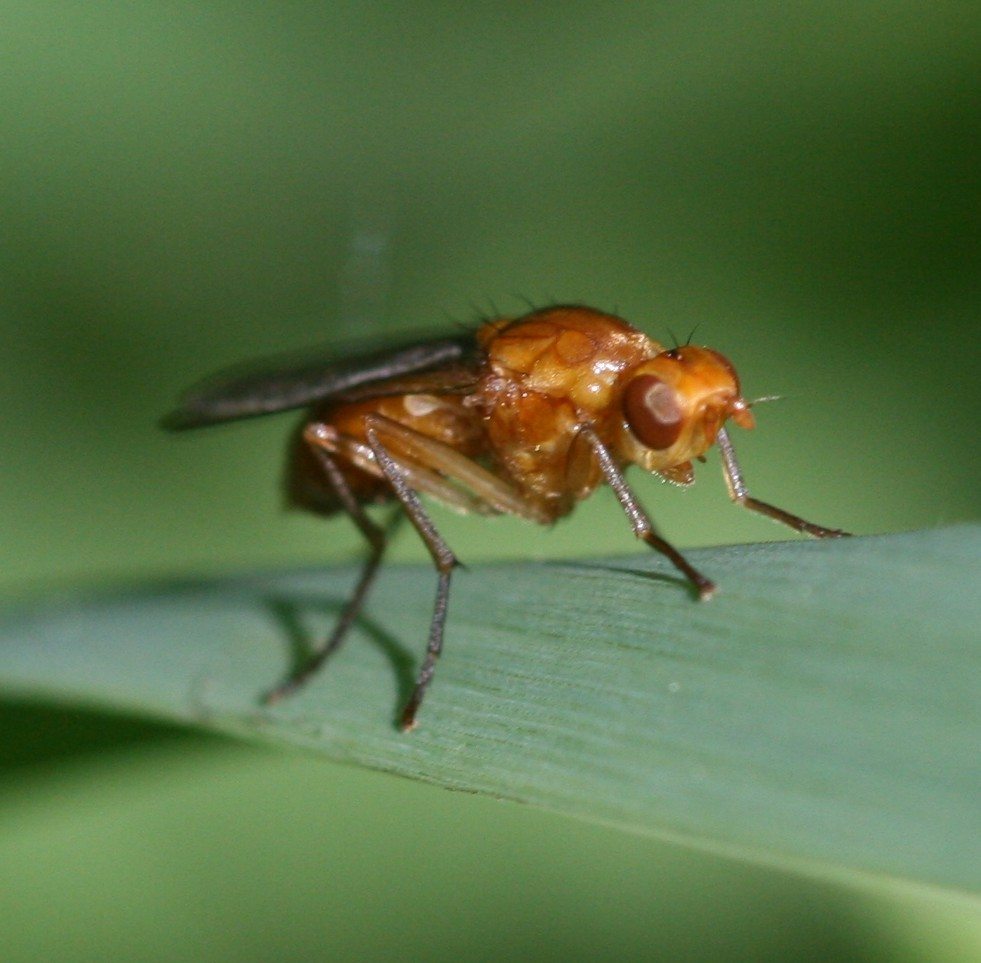Carrot Rust Fly Control: Tips For Controlling Rust Fly Maggots


The thick, edible roots of carrot plants make such sweet, crunchy vegetables. Unfortunately, when carrot pests attack the roots and leave the foliage, this tasty edible food is ruined. Rust fly maggots cause particular harm to the roots. They tunnel and live in the root and high infestations can make an entire crop inedible. What are carrot rust flies? This is an important question, and the answer will help you prevent the ruin of your root crop.
What are Carrot Rust Flies?
The carrot rust fly is a tiny insect that doesn't harm your carrot crop in the adult form. But when the insect lays eggs in May to June on the surface of the soil, the pests hatch within a few days and the larvae, or maggots, tunnel down under the surface of the soil. This is where they make contact with the roots, feeding and living in the vegetables. The larvae emerge as adults in August and lay eggs, which starts the cycle over again for fall crop problems. This is one of the more invasive of the carrot pests, but you can prevent some damage by timing your planting when flies are not laying eggs. The damage from rust fly maggots isn't immediately apparent because it all happens under the surface of the soil and the tops of the carrot plants are unaffected. Watch for damage when you thin your carrots. The rust fly maggots are tiny and reach only 1/3 inch (8.5 mm.) long. They are yellowish-white and pupate in a month. The brown pupae stay near the roots until they become adults. Controlling carrot rust flies is the most crucial for roots in the ground during August and September.
Carrot Rust Fly Control
Understanding the life cycle of carrot rust flies is pivotal in controlling carrot rust flies. Early spring and late summer are the two times the flies are laying their eggs. Tender young carrot roots are especially vulnerable during these periods. The damage to the roots is more extensive the longer the carrots are in the ground. If you don't mind chemicals in your yard, there are approved insecticides that you can work into the ground at planting time. The less toxic method is to reduce damage by removing affected roots from the ground and looking for damage in cold stored roots. Move the location of fall plantings to prevent infection from the spring crop.
Cultural Controls
In addition to crop rotation, you must remove old carrot and other vegetative debris from the planting site as these can harbor the larva. A simple method for carrot rust fly control is to use floating row covers at planting time. These prevent the parent carrot pests from accessing the soil around your plants and laying their eggs. When growing carrots, sow seeds after the parents have emerged in late June to prevent egg laying around your carrot babies. Easy methods such as these will start you on your way to controlling carrot rust flies.
Sign up for the Gardening Know How newsletter today and receive a free copy of our e-book "How to Grow Delicious Tomatoes".

Bonnie Grant is a professional landscaper with a Certification in Urban Gardening. She has been gardening and writing for 15 years. A former professional chef, she has a passion for edible landscaping.